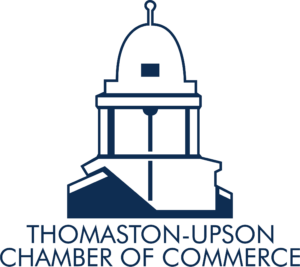You’ve got a business. Maybe it’s a niche coffee shop in a quiet part of town, or maybe it’s a fledgling skincare brand trying to grab a sliver of the online market. Either way, you need visuals—images that stop the scroll, spark curiosity, and reflect your brand without looking like they came from a dusty stock photo archive. The good news? You no longer need a six-figure marketing budget or a seasoned design team to pull that off. The better news? Artificial intelligence has quietly slipped into the room, rolled up its sleeves, and is more than ready to help you create images that don’t just sit there—they sell.
Define the Mood Before You Click Anything
Before you start conjuring glossy promos with prompts and clicks, the first thing you’ve got to nail down is your brand’s visual tone. AI can replicate nearly any style under the sun, from hyperrealistic product renders to moody editorial scenes that belong in a fashion mag. But you’re still the one holding the compass. Think of your business’s personality—bold, soft, playful, edgy—and let that guide the language you use with your AI tools.
Create Variations Without Losing the Thread
But don’t stop with just “a cool image.” Smart businesses are using AI not just to create the main visual, but to iterate. Think about how that image will look across Instagram, an email header, or the background of your website. With tools like Canva’s Magic Resize or Adobe Firefly’s context-aware editing, you can now create multiple sizes and variations of a single visual without losing cohesion. You’re not reinventing the wheel every time—you’re building a wheelhouse of branded assets that feel consistent, clean, and campaign-ready.
Let the Data Shape the Direction
Here’s something most people overlook: AI doesn’t just help with aesthetics, it helps with strategy. Some platforms use AI to analyze your past visual performance—what color schemes got clicks, what layouts kept eyeballs—and suggest image styles that are more likely to convert. That means your creative process isn’t just guided by gut; it’s guided by data-backed instincts. The magic lies in mixing that left-brain insight with your right-brain originality. When you start making decisions based on both art and algorithm, your promotional content stops feeling random and starts feeling intentional.
Lock In Your Visuals With Smart File Formats
One often-overlooked step in your promotional workflow is how you save and share your finished visuals, and choosing PDF over more casual formats like JPG can seriously upgrade your presentation game. PDFs preserve the layout, fonts, and resolution exactly as intended, which means your design shows up the same whether it's viewed on a tablet, desktop, or printed flyer. They’re also harder to accidentally alter, which adds a layer of security when you’re sharing proofs or final files with collaborators or clients. If your images are in JPG format but meant for print or professional distribution, explore this handy JPG-to-PDF converter to give your content a cleaner, more polished finish.
Preview the Real World Before You Print
Now, let’s get tactile for a second—because not every AI trick lives in the cloud. Think about integrating AI tools into your physical workflows. Maybe you’re designing packaging, flyers, or even a point-of-sale display. Using AI to generate mockups in real-world environments (like a product sitting on a boutique shelf or a tote bag slung over someone’s shoulder) lets you preview how your promo assets will actually look in context. It’s like time-traveling into the finished product before you’ve even printed a thing. This kind of visualization doesn’t just help you—it helps your team, your clients, and your audience feel the product more viscerally.
Blend AI Polish With Human Warmth
And here’s the sleeper tip most people miss: mix AI-generated visuals with human-made elements. Use AI to give you the foundational imagery, but then layer in textures, typography, or hand-drawn accents to make the final product feel warm and real. The uncanny perfection of AI can sometimes feel too polished—and you don’t want your promos to look like they were spat out by a robot with good taste. You want them to feel like they came from a person with a point of view. That’s your job: to bring the soul, while AI handles the scaffolding.
You’re the Vision, AI Is the Brush
At the end of the day, the AI isn’t the artist—you are. The tools are evolving faster than anyone can keep up with, but the heart of good design hasn’t changed. You’re still telling a story. You’re still trying to make someone pause for half a second and feel something. The difference now is that the creative playing field has leveled out a little. You don’t need to be a Photoshop wizard or hire an agency to make visuals that work. You just need to ask better questions, speak your brand’s truth clearly, and let AI take care of the rest.
Join the Thomaston-Upson Chamber of Commerce to connect with local businesses and drive economic growth in Upson County!
This Hot Deal is promoted by Thomaston-Upson Chamber of Commerce.

